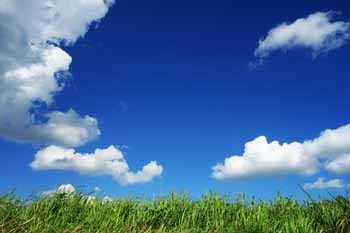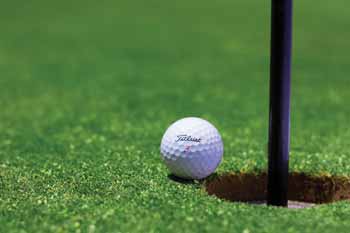What affects the growth of turfgrass?
Related Articles
In recent years, a persistent topic of discussion has revolved around the growth potential of turfgrass. STRI consultant Conor Nolan delves deeper into the subject
For me, the timing of certain treatments, such as nitrogen application, has always been the most interesting theme when it comes to growth potential (GP). The model used to predict growth potential is based on temperature only, with an optimum of either 18 or 20 degrees Celsius used to benchmark against actual temperatures. Scales of 0-1 or 0-100 are used with the higher value being the optimum, although 50 to 100 per cent is acknowledged as appropriate for the application of nitrogen. Under the optimum temperature, original designers of the model (Gelernter and Stowell) declare that the turf is growing so actively that it can stave off stressors such as mild diseases, aggressive aeration treatments or heavy traffic. The model allowed them to develop GP graphs for locations around the world based on the average monthly air temperatures. Applying the model a London location is estimated to offer a growth potential of one per cent in January and 82 per cent in July.
While temperature is arguably the most influential variable for growth, the GP model neglects other potential constraints. In her 2016 Turf Bulletin article, Great Expectations, STRI’s Kath Bentley wrote about the unpredictable nature and extremes of the UK spring weather in recent years. There have been an increasing number of very late springs, when recovery from autumn / winter disease scarring of putting greens has been delayed. Sometimes getting ‘even growth’ to occur in many parts has taken until the end of May. Quite rightly she mentions air temperature as a constraint to growth, and not just daytime either, together with cold easterly winds. In addition to aspect / orientation, sunshine levels and shade she also points to exposure as a limiting factor. Given our island location we are particularly vulnerable to wind exposure and its effects on growth.

Wind
Much of my time is spent advising on improving airflow to deliver less disease prone drier surfaces and to favour the better grasses in a golf course. The downside of excessive wind is rarely looked at but wind is a powerful factor that can limit plant development. Wind can alter plant growth and developmental responses through ‘seismorphogenic’ (shaking) and ‘thigmorphogenic’ (contact rubbing) processes.
Wind impact on turfgrass was demonstrated in wind tunnel experiments by Grace and Pitcairn (1981). Wind increased leaf transpiration and reduced leaf extension, relative growth rate and leaf area ratio. Moisture stress worsened the condition. It’s no wonder that many turf managers fear the easterly drying winds which inevitably arrive sometime during the spring.
Russell and Grace (1978) examined the effects of wind speed on tall fescue and perennial ryegrass at various wind speeds. They found:
- Plants exposed to high wind speeds (21 miles / 35km per hour) for 14 days were shorter and less leafy than plants exposed to lower speeds
- Damage increased with speed increase
- Damage was more pronounced on older leaves
- The mean relative growth of all above ground parts declined with increasing wind speed
- Virtually all leaves at wind speeds of 35km per hour showed abrasive damage.
Growth potential application
It’s argued by proponents of the temperature-based growth potential model that while the GP is simplified it’s sufficient as a management and planning tool (Woods, 2013). It is also acknowledged as a tool to estimate how grass potentially grows.
Those who use the GP aim to match nitrogen application rates and timings based on how much nitrogen the plant potentially uses both in the short term and for a year. The maximum amount of nitrogen is selected based on the grass type and what the turf manger is trying to achieve. What the plant will then use in a week or month is estimated by multiplying the maximum monthly nitrogen rate, set by the user, by the growth potential factor for that period. For example, if the maximum N set is 3.0g N/m2 per month, for a surface in London, the estimated annual use would be 10.5g N/m2 based on the model.
Choosing that maximum rate will be a key factor. In my experience, that boils down to a good understanding of your individual situation, recognition of nitrogen usage norms for your climate, visual assessment, soil profiles and so on. A golf green situation may be completely different to the nitrogen demand for a golf tee or football pitch, as the latter two may be more concerned about achieving maximum growth or at least a much higher yield.
Followers of the growth potential model will apply most of their nitrogen during the summer rather than spring or autumn. That may be a valid approach in other more settled climates but in the British Isles and Ireland, where seasons are not quite so clear cut, the distribution of nitrogen needs to be evenly spread over the year. To base applications purely on the growth potential in these islands may lead to disappointment unless you modify the model.

During the slower growing winter months, you may be in a situation where some additional growth to counter wear and retain density with the least amount of nitrogen is warranted. Growth potential would predict low growth without help. In those circumstances, the nitrogen requirement to achieve sufficient growth response may well require a multiplying corrective factor based on the growth potential. In other words, you will need to apply more nitrogen than the model would predict to counter the lack of temperature. Otherwise, you may have thinned surfaces or disease scarred surfaces for longer periods than desired.
On the other hand, during the summer months, when the grasses are growing naturally at better temperatures, they tend to need less assistance from nitrogen application, most probably helped by mineralisation of organic matter. On a golf green nitrogen input, based on the 100 per cent summer growth potential, this may not be what you are after and can end up being counter to the promotion of green speed.
Taking advantage of growth windows in the spring, using growth potential models to predict short term growth has some, dare I say it, potential merit. When doing so I would suggest that wind chill or ‘feels like’ temperature values, provided by weather forecasters, should be used. While there are many factors that influence timing of winter / spring nitrogen application, above zero night time conditions and daytime temperatures above six to seven degrees Celsius are required. It’s likely that only with experience of using the growth potential model, having made the adjustments above, that you will be able to determine when nitrogen applications are justified in the spring.

























